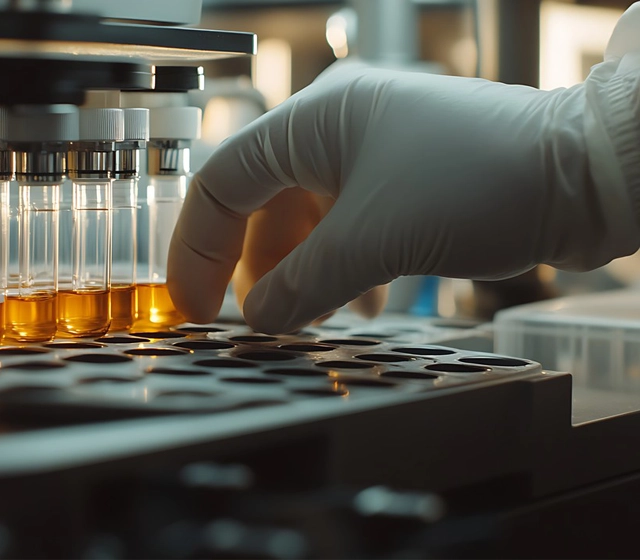多肽修饰
多肽测试
The role of peptide testing
Peptide testing determines the purity, molecular weight, sequence correctness, and the presence of impurities of peptides. This is crucial for scientific research experiments, drug development and clinical applications because: high purity peptides (e.g. >95%) can reduce experimental interference and improve data reliability. Impurity peptides may affect biological activity or even trigger an immune response (e.g. impurities in drugs may cause allergy or toxicity).
Commonly used assays:
HPLC (High Performance Liquid Chromatography): analyses peptide purity and impurity composition.
Mass Spectrometry (MS): Determine molecular weight and verify sequence accuracy.
Amino acid analysis (AAA): quantitatively determine the amino acid composition of the peptide.
Verification of the biological activity and function of peptides
Ensure stability of peptide reagents
Ensure sterility and endotoxin compliance

Common Peptide Testing
It mainly includes the purity of peptides; content testing; sterility testing; PH value; moisture testing; solubility testing and other aspects.
Sterility
Direct inoculation method: inoculate into both media, incubate for 14 days and observe for microbial growth.
Membrane filtration method: The solution was passed through a sterile filter membrane (pore size 0.22 μm), microorganisms were trapped on the membrane, which was transferred to the culture medium for incubation.
ATP bioluminescence: Detection of ATP produced by microbial metabolism, rapid (hours) but requires validation.
Purity
RP-HPLC: Based on the difference in hydrophobicity of the peptides, separation on a C18/C8 column and detection by UV or MS.
MS: Determination of peptide molecular weight (MALDI-TOF or ESI-MS), verification of agreement with theoretical values and detection of modifications or impurities.
Amino acid analysis principle: after acid hydrolysis of the peptide, quantify the composition of each amino acid and verify the purity by comparing with the theoretical value.
SDS-PAGE: Separation by electrophoresis and observation of single bands by Caulmers Brilliant Blue or Silver staining.
content
Elemental analysis: By decomposing complex physical processes into many tiny “meta-processes”, each “meta-process” follows the same law, the problem is simplified by analyzing these “meta-processes” and applying necessary mathematical methods.
Conservation of mass: In any physical or chemical reaction, the sum of the masses of the substances involved in the reaction is equal to the total mass of the products after the reaction.
Area normalisation:This is a method that is mathematically defined as converting the absolute value of a physical system into a relative value relationship. Through normalization, calculations can be simplified and the value can be effectively reduced.
肽修饰
在多肽修饰方面经验丰富,为多肽研究提供了多种可行的途径。


